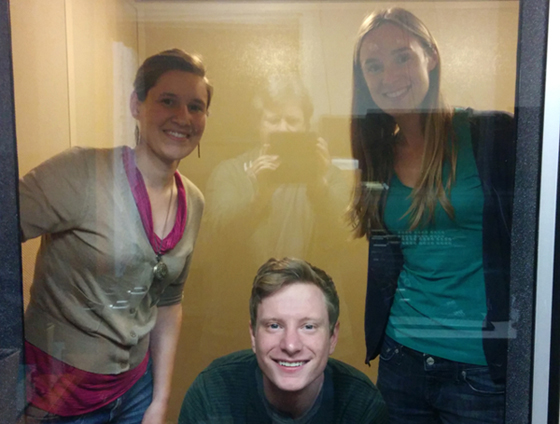

(Left to Right): Sarah Luttrell, Sam Hulse, Archer Larned
(Reflection): PI

Back (Left to Right): Rebecca Gregory, Julia Gao, Lauren Gorelik, Megan Gallagher
Front (Left to Right): Emily Coyle, Samantha Perry
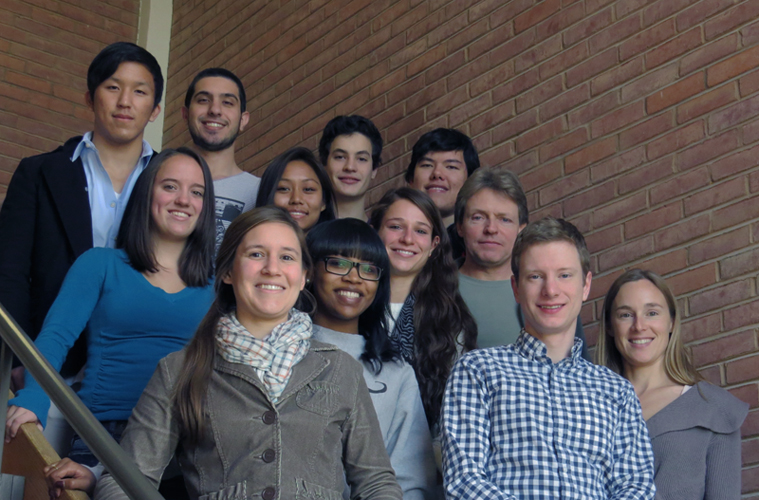
Back (Left to Right): Ki Jung, Aymen Alqazzaz, Sergiu Costinas, Charles White
Middle (Left to Right): Samantha Perry, Julia Gao, Cody Mezebish, Bernie Lohr
Front (Left to Right): Sarah Luttrell, Neema Philippe, Sam Hulse, Archer Larned
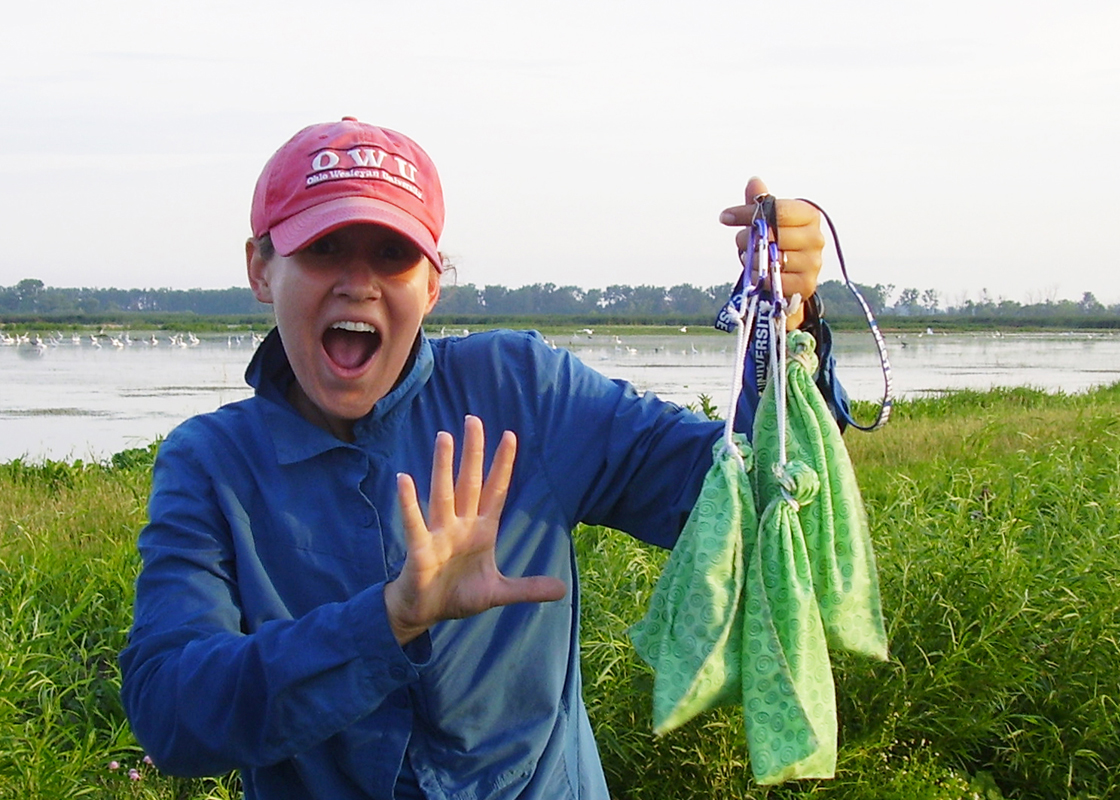 |
Sarah Luttrell Sarah is interested in how organisms diversify into new lineages. She is looking at patterns of phenotypic and genetic diversity in subspecies of the Marsh Wren (Cistothorus palustris) to examine the ways in which local selection and gene flow interact to influence speciation. By comparing overall size and shape, coloration, call structure, and neutral genetic markers among subspecies she hopes to determine how populations have diversified under different ecological pressures. The congruence among different measures will help in understanding whether lineage divergence is occurring, and if so, which neutral or selective forces are driving that process. Sarah is also directly involved in guiding our captive breeding efforts with Grasshopper Sparrows in the laboratory. manor.sarah at gmail.com |
|
| |
||
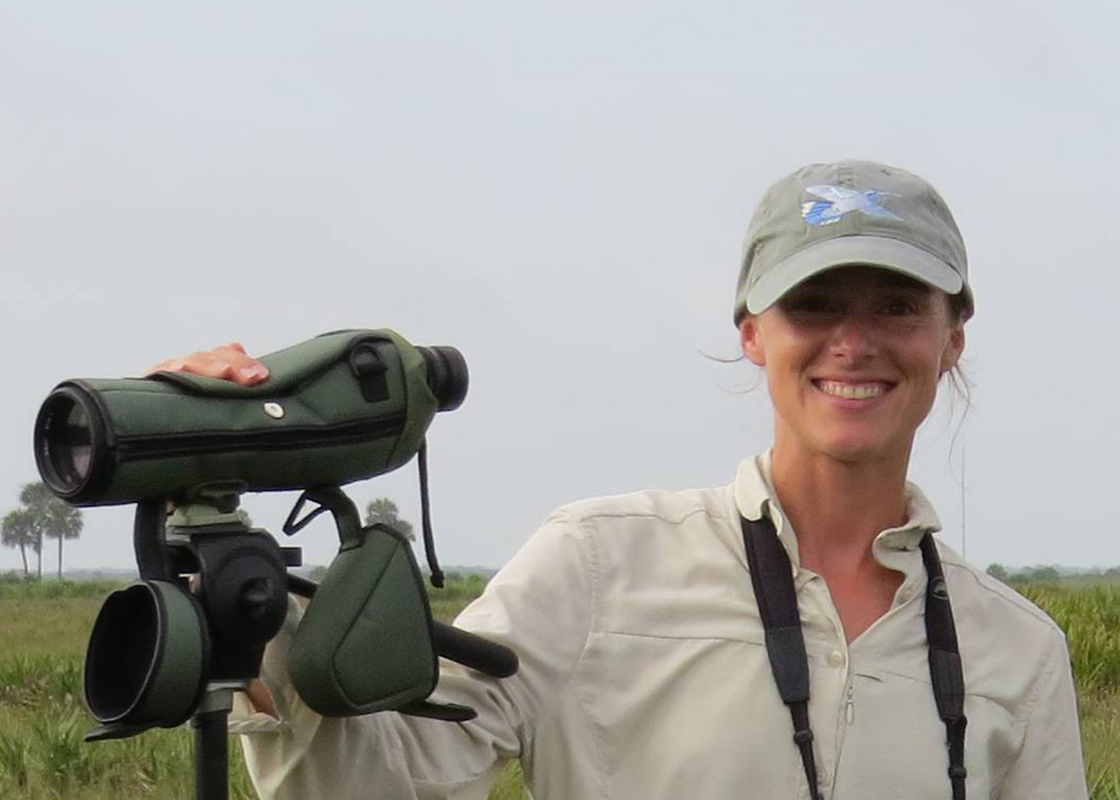 |
Archer Larned Archer is studying the nesting behavior, song, and habitat requirements of the critically endangered Florida Grasshopper Sparrow (Ammodramus savannarum floridanus), assisting the USFWS with their recovery efforts for this unique bird. She is broadly interested in conservation biology and behavioral ecology, and has studied these issues in a variety of species over the last several years. Archer is interested in how behavior can be applied as a tool in conservation efforts, and in the efficacy of strategies such as conspecific attraction and acoustic monitoring. She is also currently analyzing songs from the Puerto Rican Grasshopper Sparrow (A. s. borinquensis) to identify differences in song structure in the Caribbean subspecies of this bird from those in North America. af.larned at gmail.com |
|
|
|
||
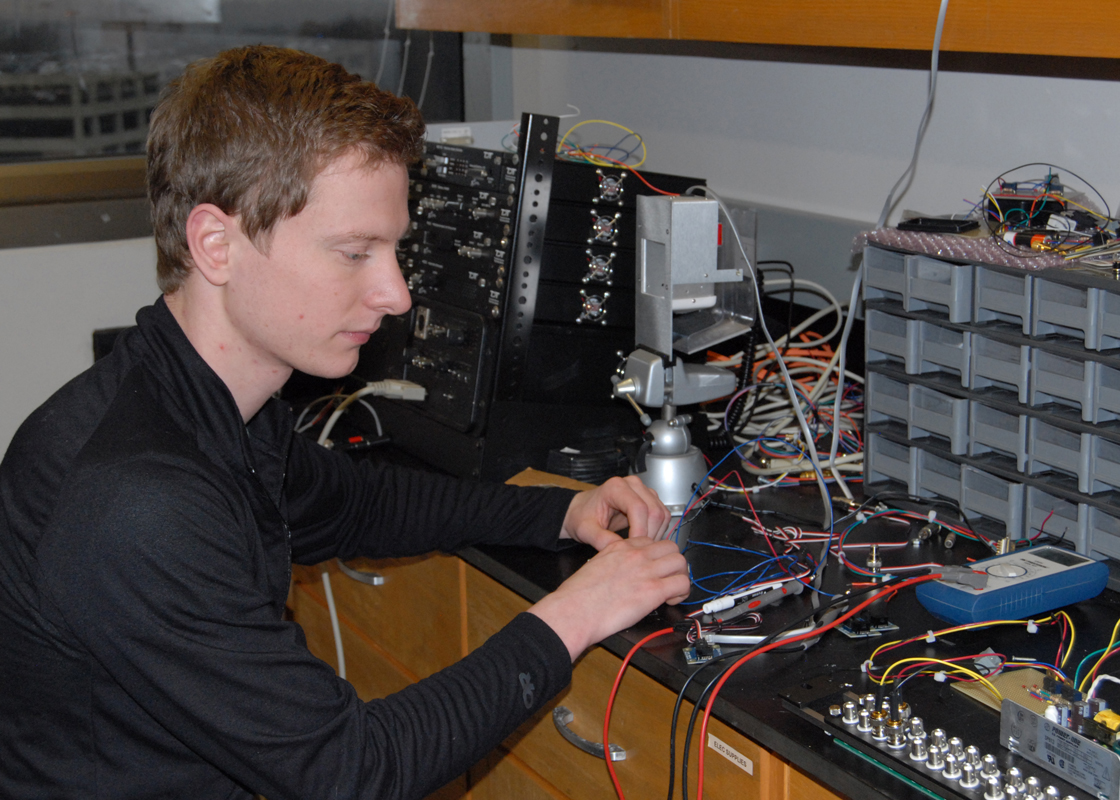 |
Sam Hulse Sam is interested in song choice and the role of sexual selection on the evolution of birdsong. Sam has been building and designing systems to do choice testing and operant conditioning in the laboratory. He is interested in testing potential preferences by females for song type and song consistency. Additionally, Sam is examining how song may change over the lifespan of a bird, and how this may affect mating success. In the field, he has been assisting with both song type playback tests, and in examining the impact of noise on social behavior and song responses at the Chester River Field Research Station. hsamuel1 at umbc.edu |
|
| |
||
Undergraduate Research Students
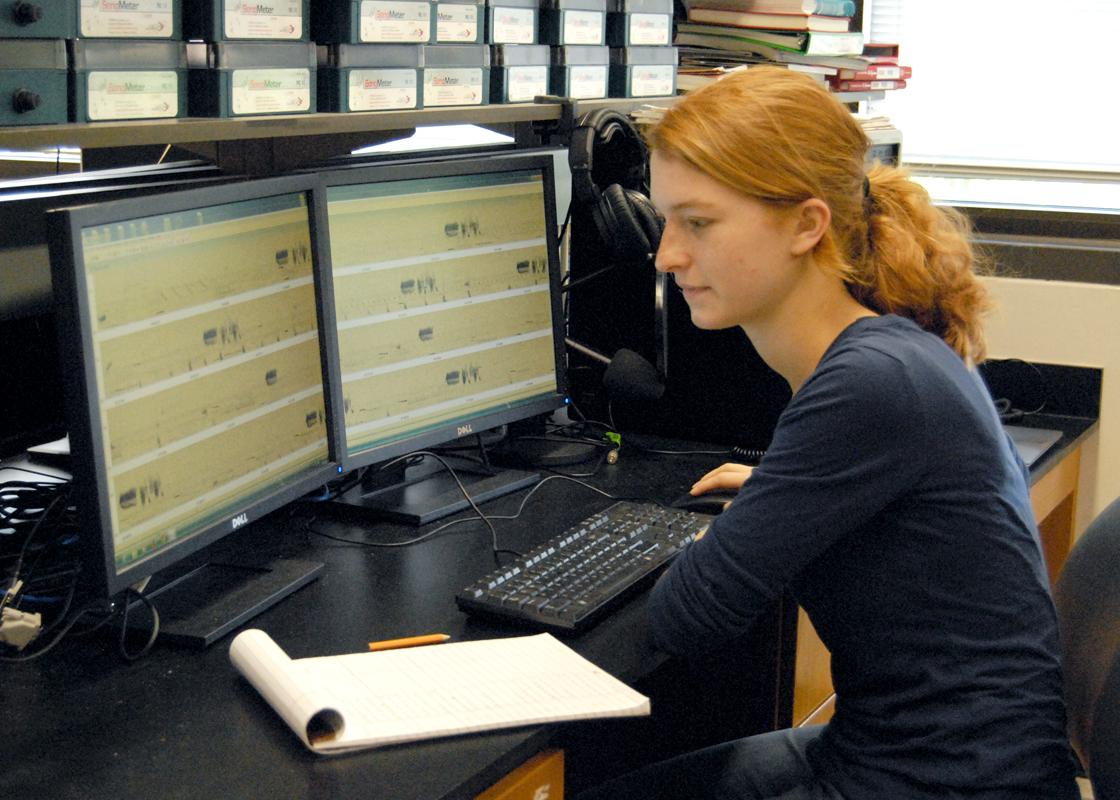 |
Rebecca Gregory Rebecca is assisting in field work at the Chester River Field Research Station on a study testing the relative importance of interspecific and intraspecific song features in Grasshopper Sparrows. She has been mapping territories and helping to run song playback tests looking at the responses of territorial males to an aberrant male song recorded from a bird 10 years ago. That male attracted a mate for only part of one year, but held a territory in the population for 4 consecutive years. His song may hold clues to male-directed vs. female-directed features in song. |
|
|
|
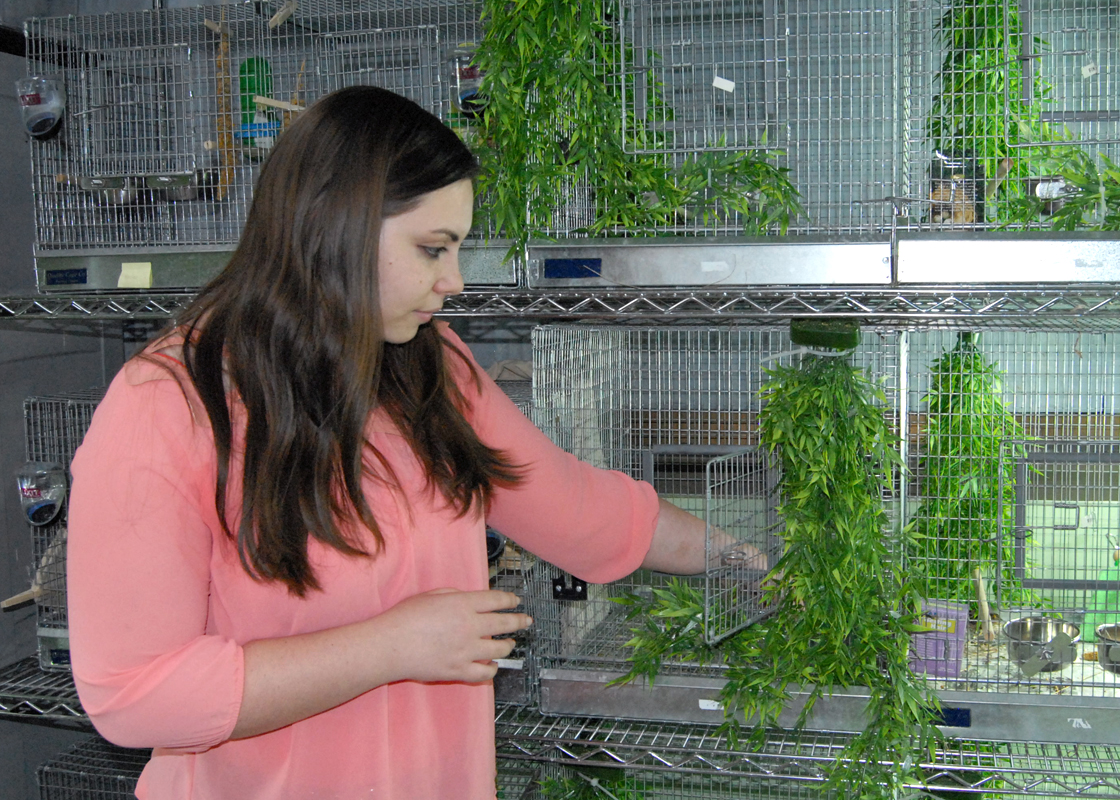 |
Lauren Gorelik Lauren has been helping to study and maintain our colony of Eastern Grasshopper Sparrows in the lab as part of ongoing work with the endangered Florida Grasshopper Sparrow. She has also assisted in a study of song variation and song patterning in wild Florida Grasshopper Sparrows recorded in the remaining populations of this subspecies in central Florida. She has been tracking and tallying songs from autonomous recording units at several sites to identify differences in song output between the Florida and Eastern subspecies. |
|
|
 |
Samantha Perry Samm received a UMBC Undergraduate Research Award to continue work on nestling vocalizations in Grasshopper Sparrows, work started by Lacey Laudick (below). Samm is also studying the behavioral characteristics associated with successful captive care of Grasshopper Sparrows in the lab. She has been directly involved with our captive breeding attempts that will inform ongoing studies with the endangered Florida Grasshopper Sparrow. Samm will be attending vet school in the Fall of 2015. |
|
|
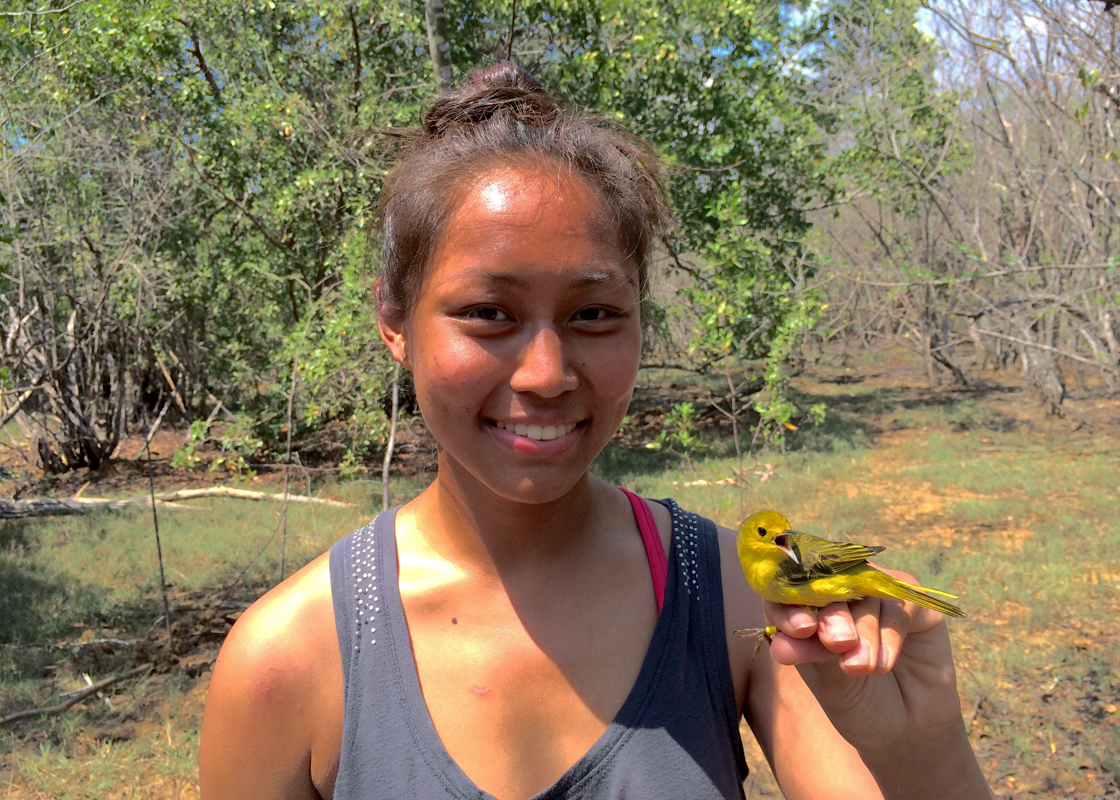 |
Julia Gao Julia received a UMBC Undergraduate Research Award to investigate song variation in Yellow Warblers (Setophaga petechia), comparing a sedentary population in Jamaica with migratory North American populations. She is also involved in helping to study and maintain our colony of Grasshopper Sparrows. She is using autonomous recording units to obtain digital recordings of all male Grasshopper Sparrows in the laboratory, and is examining vocal patterns of these captive birds as a comparison with patterns in wild Grasshopper Sparrows. Julia will be attending vet school in the Fall of 2015. |
|
|
 |
Megan Gallagher Megan has been assisting graduate student Sarah Luttrell in examining the song repertoires of Gulf Coast Marsh Wrens (Cistothorus palustris). She has been sorting and cataloguing song types for these subspecies, whose repertoires have not yet been documented, and is comparing methodologies for estimating repertoire size. Eastern and western populations of Marsh Wrens have dissimilar repertoire sizes and song delivery styles. Megan is helping to determine if repertoires and song patterns of Gulf Coast birds more closely resemble those of the eastern or western subspecies. She has presented the results of this work at the joint AFO/WOS meeting in the summer of 2015. |
|
|
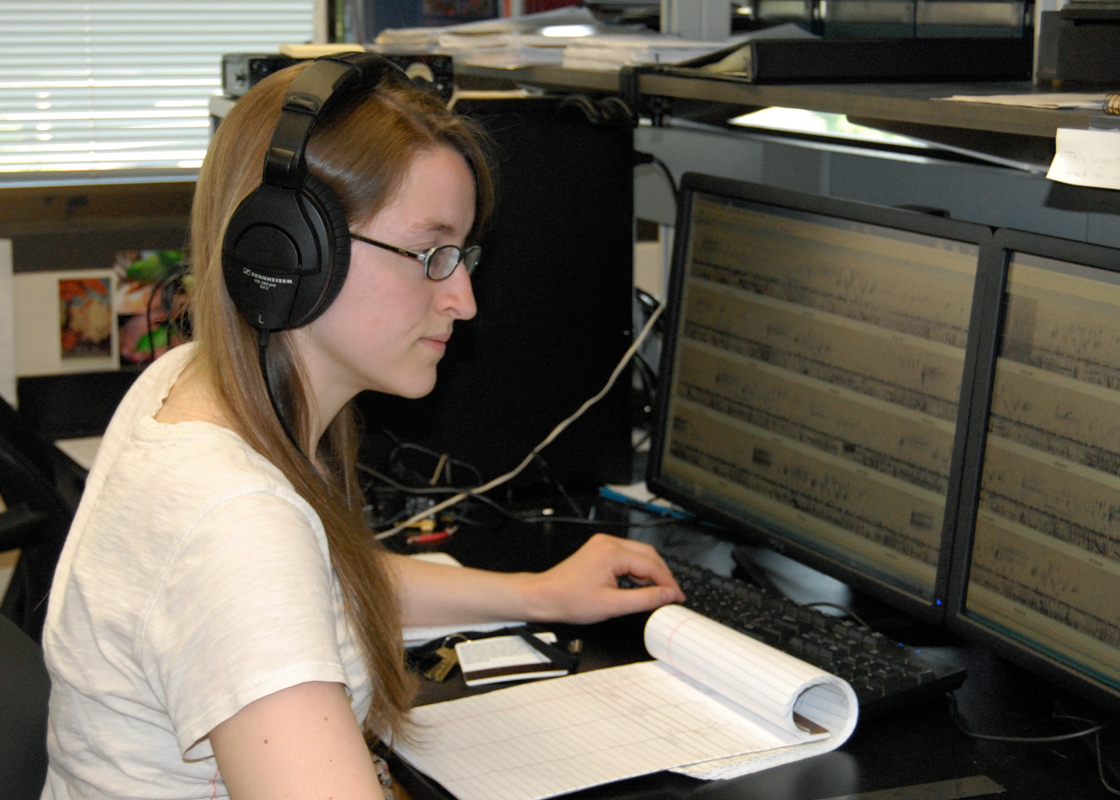 |
Emily Coyle Emily is using data from autonomous recording units to analyze song output and song patterning in the critically endangered Florida Grasshopper Sparrow. She is especially interested in how song is related to pairing stutus, and in daily song patterning and how this may be song-type dependent (and how daily song patterns can be used to inform population estimates using song surveys in this species). Emily has presented the results of her work at the joint AFO/WOS meeting in the summer of 2015. |
|
|
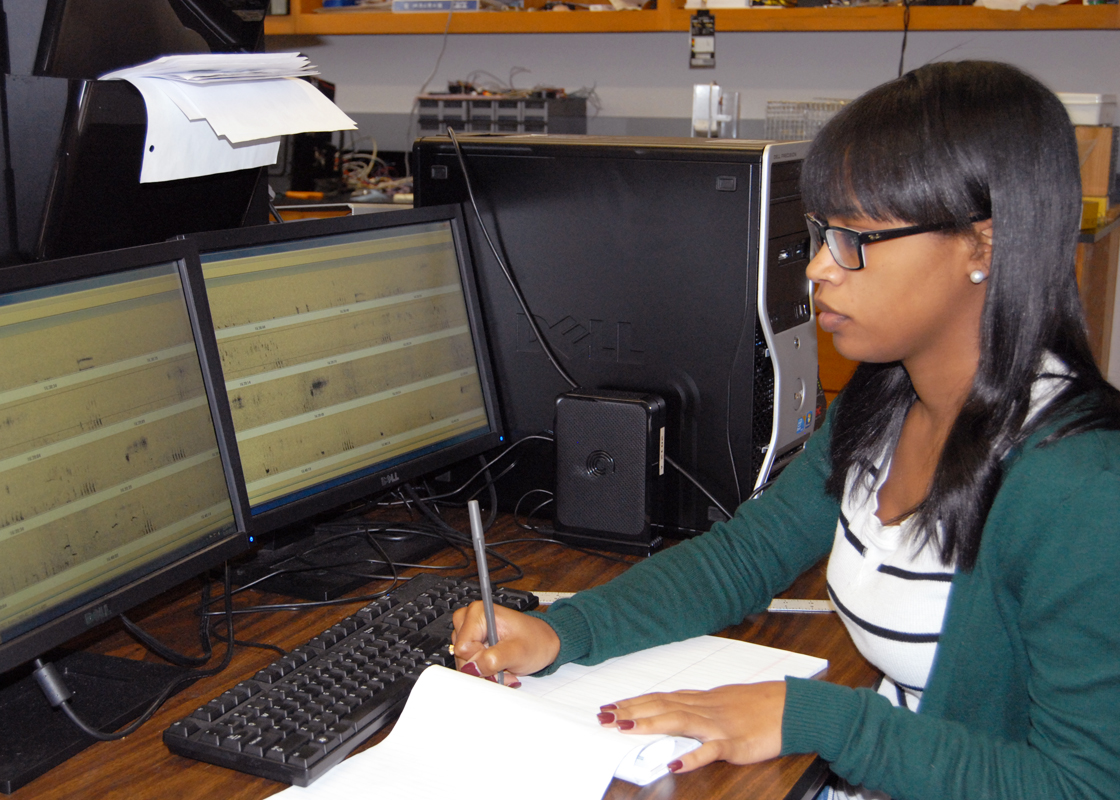 |
Neema Philippe Neema assisted in a study of song variation, song patterning, and song output in wild Grasshopper Sparrows recorded at the Chester River Field Research Station. She tallied data from autonomous recording units to identify differences in song between neighboring males at the Chester River Field Research Station site. This data serves as a foundation for comparisons with other populations of the Eastern subspecies |
|
|
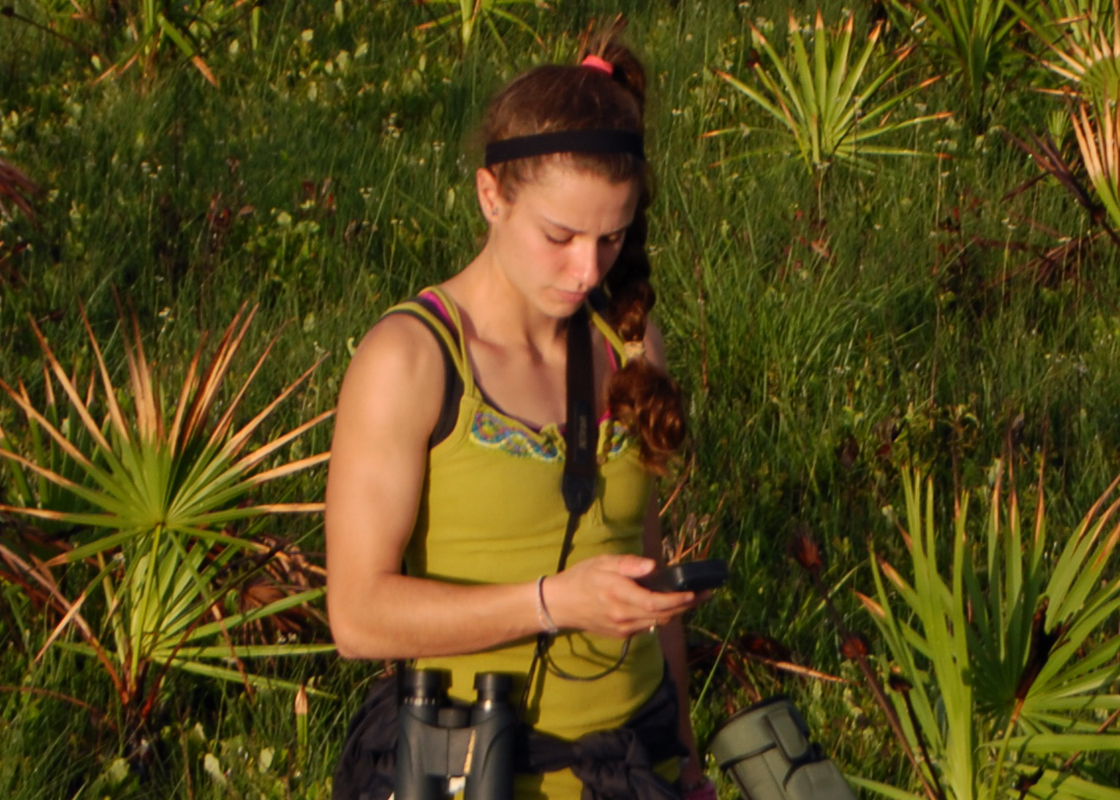 |
Cody Mezebish Cody spent a summer in central Florida working with Archer Larned on the critically endangered Florida Grasshopper Sparrow. She was responsible for finding nests, mapping male territories, and recording and later measuring male songs. In the lab, Cody co-authored a short paper on the song of an unusual male Florida Grasshopper Sparrow (Hewett Ragheb, Mezebish, and Lohr, 2015, Wilson Journal of Ornithology 127: 280-283), and she has helped in our laboratory captive breeding studies as part of the conservation efforts with this bird. |
|
|
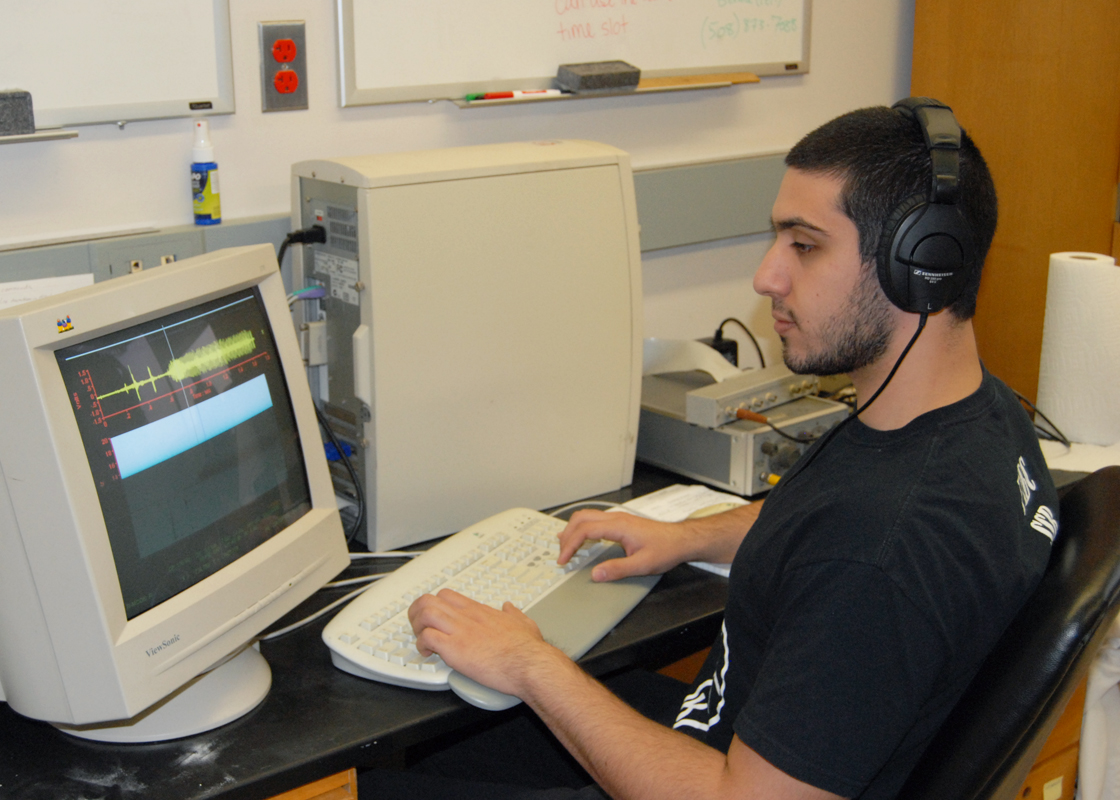 |
Aymen Alqazzaz Aymen spearheaded an analysis of song variation in Grasshopper Sparrows including the four North American subspecies. He went on to develop a note and syllable type library for the Grasshopper Sparrow "warble" song across its range (studies that are ongoing). Aymen received both an Undergraduate Research Award and an Undergraduate Research Assistantship Support Award from UMBC for his independent research projects in the lab, as well as a Turner Award from the Animal Behavior Society. |
|
|
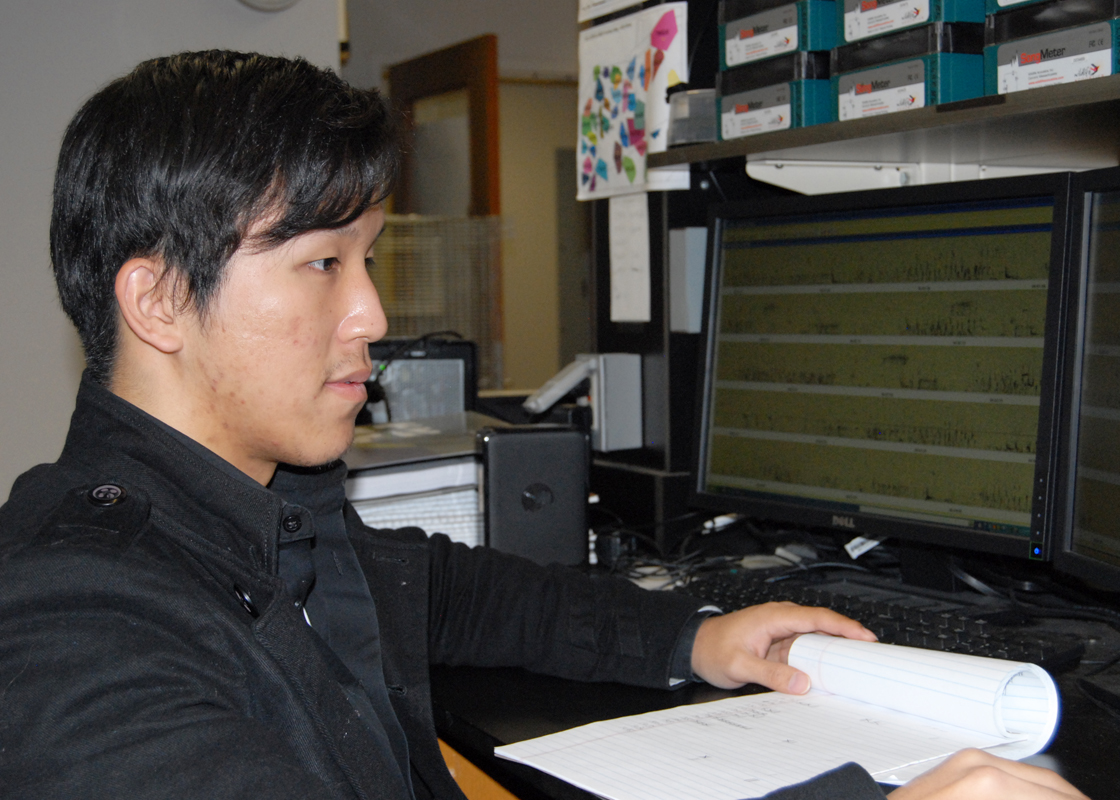 |
Ki Jung Ki was responsible for coordinating our project on song type use and its relationship to the breeding cycle in Grasshopper Sparrows. He helped organize data from autonomous recording units to identify how Grasshopper Sparrow song type production tracked breeding behavior. Ki also looked at diurnal song patterning in this species, and found interesting distinctions between song peaks and time of day. Ki was the recipient of an Undergraduate Research Award from UMBC for this work. |
|
|
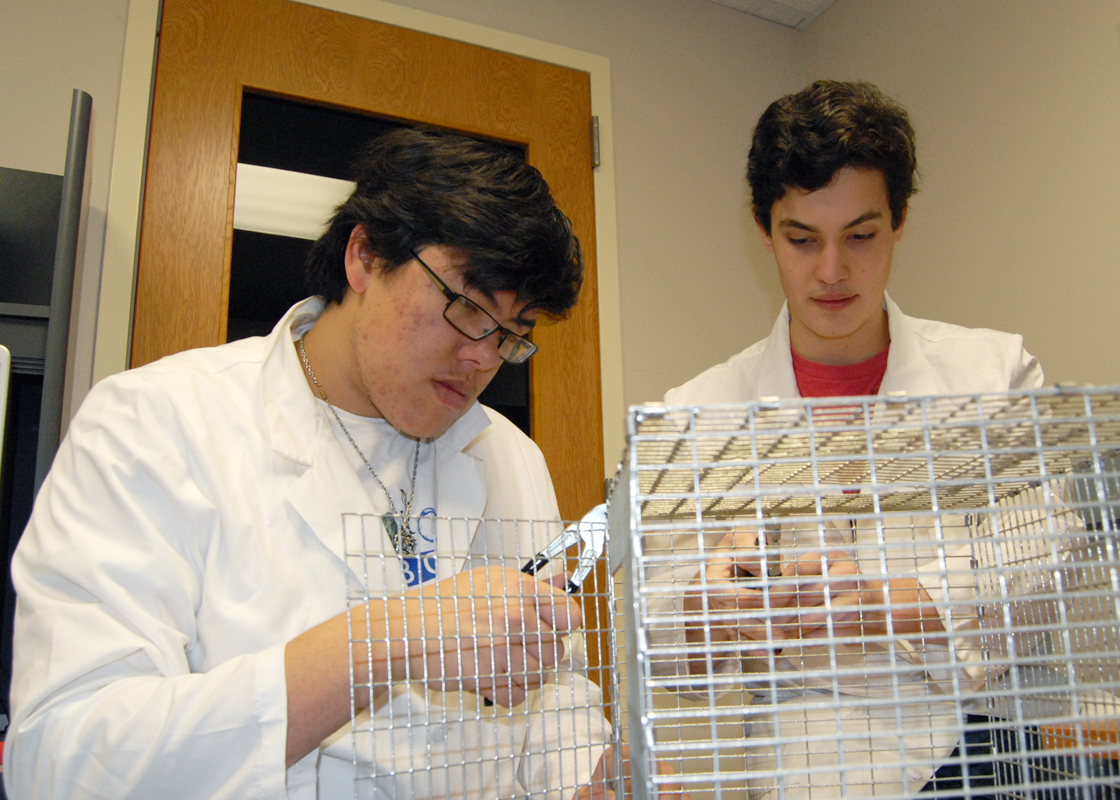 |
Charles White & Sergiu Costinas Charles and Sergiu were instrumental in assisting Sam Hulse in a study of female song preferences. Both Charles and Sergiu received UMBC Undergraduate Research Awards for their work in developing hardware and Tucker-Davis RPvdsEx software circuitry for running female Grasshopper Sparrows in operant behavioral tests involving preferences for songs of different types. |
|
|
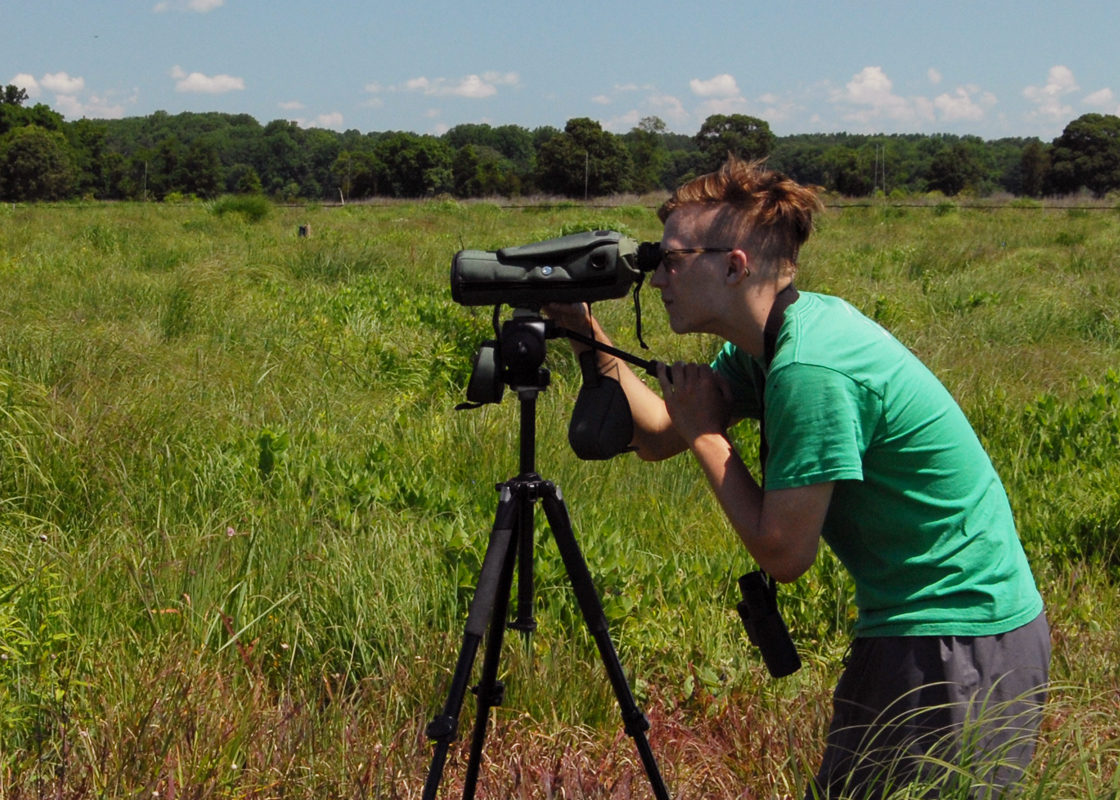 |
Oliver Muellerklein Oliver developed software tools for examining territory dynamics over varying time scales using GPS territory data in male Grasshopper Sparrows from the extensive Chester River Field Research Station mapping efforts. Unlike many temperate territorial passerines, Grasshopper Sparrows appear to be semi-nomadic, and while they show site fidelity in managed habitat, will move when the habitat undergoes normal succession. Oliver was the recipient of a Nancy Klamm Undergraduate Poster Award for this work at the 2013 meeting of the Wilson Ornithological Society. He will be starting in the PhD program at UC Berkeley in the Fall of 2015. |
|
|
||
Former Graduate Rotation Students
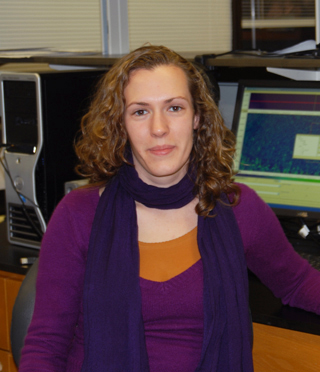 |
Karan Odom Karan's rotation work involved an analysis of software for performing acoustic bird surveys. She helped to evaluate the application of software for identifying species spectrographically in the context of applications for differentiating unique male songs within a species. This work was useful in facilitating measures of song output for specific males in long-term recordings, as well as monitoring the precise ways in which Grasshopper Sparrows transition between song types. Karan is now a student in the laboratory of Dr. Kevin Omland, but continues to work closely with the Lohr lab.
|
|
| |
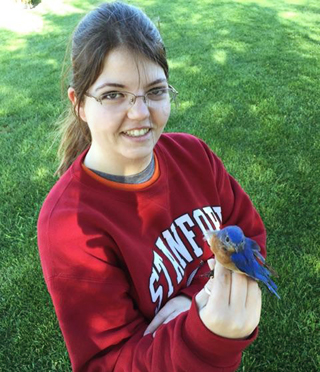 |
Evangeline Shank Evangeline assisted graduate student Archer Larned in measuring and comparing song variation among populations in the critically endangered Florida Grasshopper Sparrow. She analyzed songs from a newly discovered small population of this subspecies on private property. Using custom software routines in the SIGNAL sound analysis package, she produced a detailed description of song properties in this population. Evangeline is also now a student in the laboratory of Dr. Kevin Omland, but also continues to work closely with the Lohr lab.
|
| |
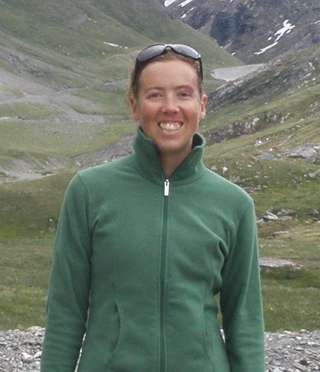 |
Sarah Hansen Sarah helped graduate student Sam Hulse analyze playback results for a test in Grasshopper Sparrows that evaluated characteristics of male-directed and female-directed features of song. In addition to this analysis Sarah produced multimedia content for training students in playback test procedures, as well as authoring a blog post summarizing the conservation-related work taking place in the lab: Captive breeding may soon help save endangered songbird .
|
| |
 |
Patrick Ciccotto Pat worked with our lab to develop R code for examining the relative variation in song at different levels from intra-individual (within and across singing bouts, and across years), to within population, to variation across populations within subspecies. This analysis allows us to process a very large dataset of song recordings that integrate song variation across all these levels. Pat graduated from the Mendelson lab in 2014.
|
| |
 |
Sarah Marking (Ashby) Sarah explored the role of the two song types in Grasshopper Sparrows. Territorial song (also known as "buzz" song) is sung by most males at the beginning of each breeding cycle. Males may append the secondary song type ("warble") to the first, and then transition entirely to this second song type by the end of the breeding cycle. Sarah performed a series of playback tests to evaluate the song choice responses of males at different points in their breeding cycle. Her rotation work culminated in a paper on song function: Lohr, Ashby, and Wakamiya, 2013, Behavior 150: 1085-1106.
|
| |
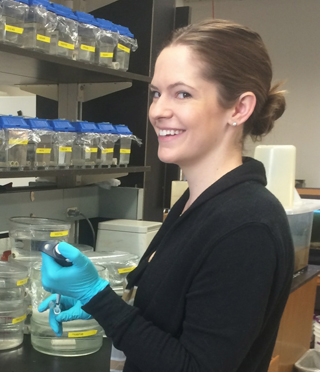 |
Mary Donohue (Willard) Mary began our project, continued by Aymen Alqazzaz, to classify and categorize song notes and song syllables in the Grasshopper Sparrow "warble" song. She developed a hierarchical classification scheme for identifying patterns of vocal structure that will allow us to compare whether similar geographic distinctions exist between this song and the principal territorial song in this species (the "buzz" song). Mary is currently pursuing PhD work in Dr. Tom Cronin's laboratory.
|
| |
||
Former Undergraduates and Field Interns
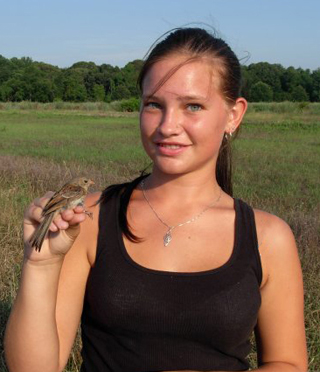 |
Lacey Laudick (Northern Kentucky University) Lacey observed and recorded nestling Grasshopper Sparrows and found that they produce vocalizations that change both qualitatively and quantitatively with age. Nestling vocalizations become more adult-like, especially toward the end of the nestling period. She also found that Grasshopper Sparrow males and females contribute equally to feeding the young during this crucial early stage, despite male time budgets that include singing and territorial behavior. |
|
|
|
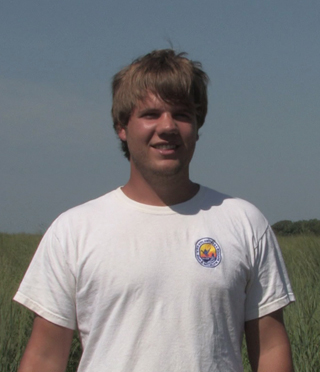 |
Matt Freeman (UMBC '13) Matt helped obtain digital recordings of male Grasshopper Sparrows at the Chester River Field Research Station in the summer of 2010. Each male was targeted for individual, high-quality audiorecordings. He also helped initiate our field studies with ARUs, helping map territories and place these devices within each male sparrow's territory. Matt helped calibrate ARUs with behavioral observations. |
|
|
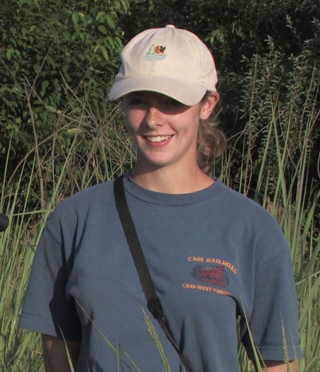 |
Rachel Field (Washington College) Rachel was responsible for helping to coordinate a large number of field tasks during her two years as a summer intern at the Chester River Field Research Station, including mist-netting, color-banding, and pilot telemetry studies. She also headed a project to survey Blue Grosbeak pairs and evaluate whether mate selection was based on plumage characters. |
|
|
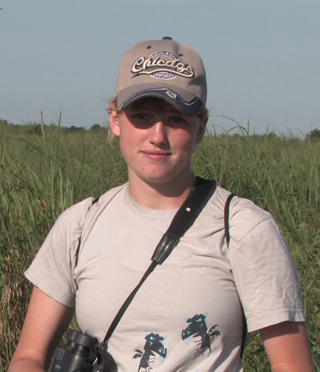 |
Amanda Lindsay (Colby College) Amanda assisted in capturing and banding birds, finding nests, and mapping male Grasshopper Sparrow territories using hand-held GPS units. She was interested in mate fidelity within and across seasons, and helped identify whether pairs remained together across broods, across years, and across changes in male territory location. Amanda also helped track female movement when pairs did not remain together. |
|
|